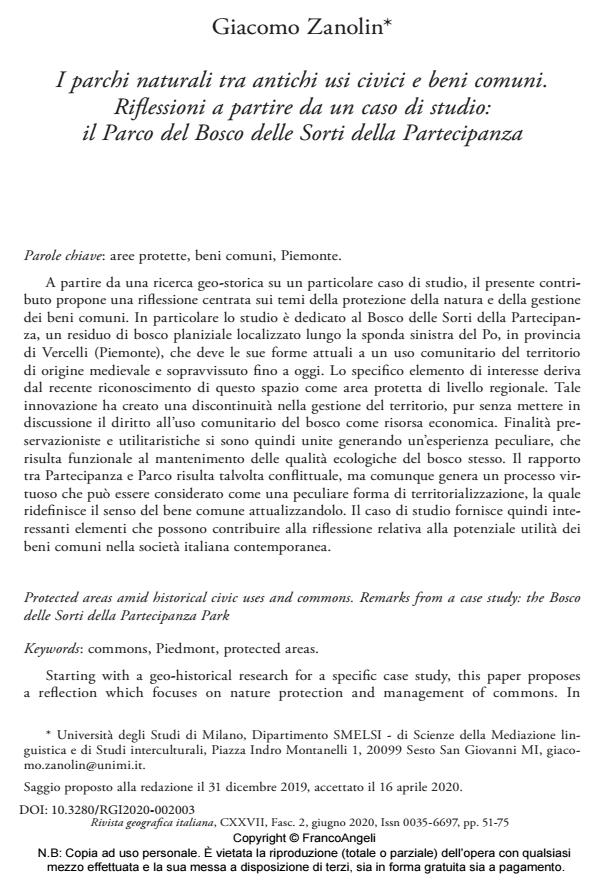Protected areas amid historical civic uses and commons. Remarks from a case study: the Bosco delle Sorti della Partecipanza Park
Journal title RIVISTA GEOGRAFICA ITALIANA
Author/s Giacomo Zanolin
Publishing Year 2020 Issue 2020/2
Language Italian Pages 25 P. 51-75 File size 397 KB
DOI 10.3280/RGI2020-002003
DOI is like a bar code for intellectual property: to have more infomation
click here
Below, you can see the article first page
If you want to buy this article in PDF format, you can do it, following the instructions to buy download credits

FrancoAngeli is member of Publishers International Linking Association, Inc (PILA), a not-for-profit association which run the CrossRef service enabling links to and from online scholarly content.
Starting with a geo-historical research for a specific case study, this paper proposes a reflection which focuses on nature protection and management of commons. In particular, the study is dedicated to the Bosco delle Sorti della Partecipanza, a remnant of lowland forest located along the left bank of the Po, in the province of Vercelli (Piedmont), which derives its current form from a common use of the territory that originated in the Middle Ages and survived until the present day. This is of particular interest given the recent acknowledgment at regional level of this space as a protected area. This new development has created a disconnect in the land’s management, without challenging the right to the common use of the forest as an economic resource. Conservation and utilization objectives have therefore combined to generate a unique experience aimed at preserving the ecological qualities of the forest itself. The relationship between the Partecipanza and the Park is sometimes contentious, but still generates a positive process that can be considered as a unique form of territorialisation, redefining the meaning of the common land by bringing it up to date. The case study therefore provides elements of interest that may lead us to reflect on the potential usefulness of commons in contemporary Italian society.
Keywords: Commons, Piedmont, protected areas
Giacomo Zanolin, I parchi naturali tra antichi usi civici e beni comuni. Riflessioni a partire da un caso di studio: il Parco del Bosco delle Sorti della Partecipanza in "RIVISTA GEOGRAFICA ITALIANA" 2/2020, pp 51-75, DOI: 10.3280/RGI2020-002003